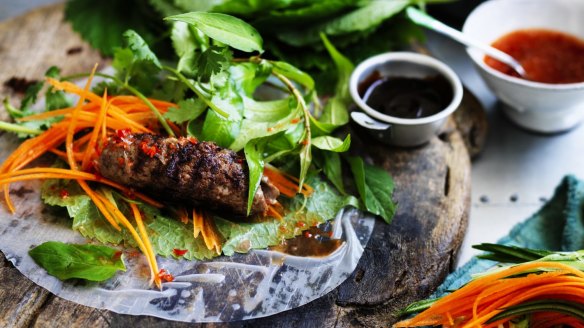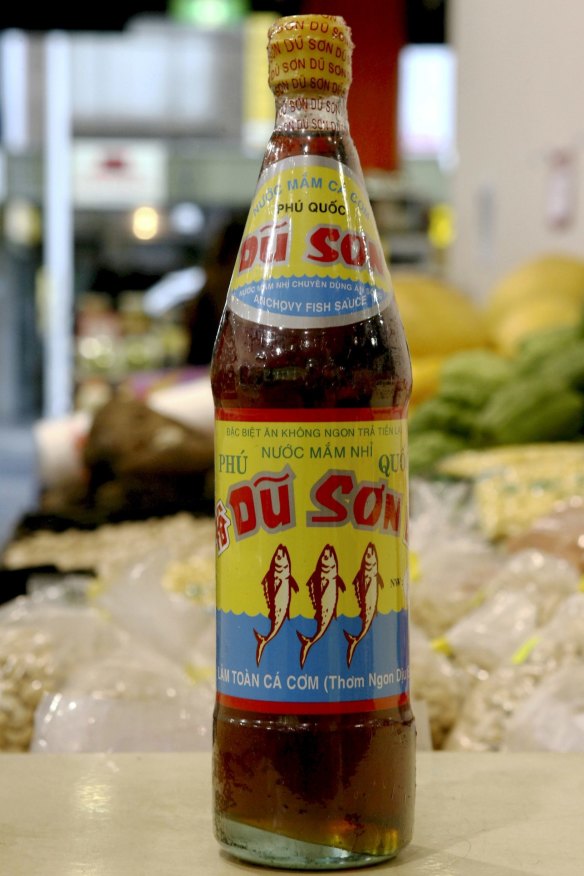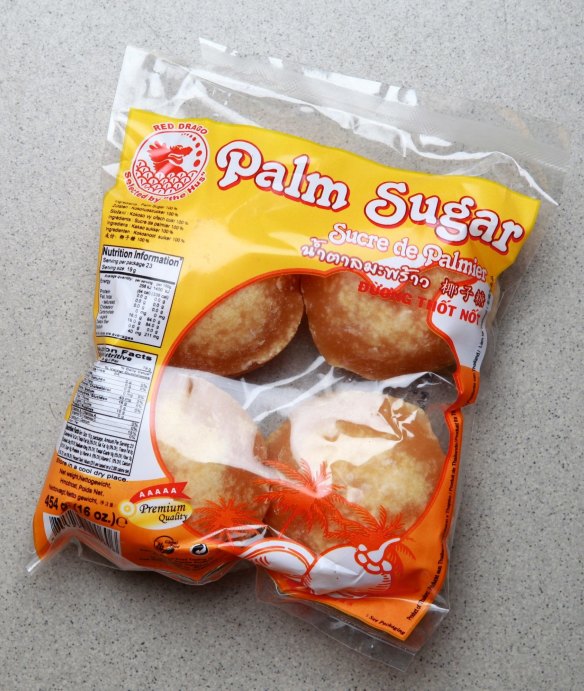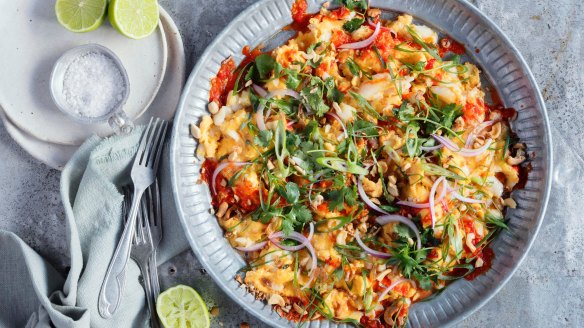Five south-east Asian pantry heroes and how to use them at home

A trip to an Asian grocer can be a mystifying experience.
You've got your entry-level items such as soy and hoisin sauce – fairly easy grabs for even the least savvy home cook.

Then you've got the other items. Products that, however common or obscure, can be intimidating to use at home. Even picking the right fish sauce can be a little gruelling.
But it doesn't need to be so. All that's required is a little know-how.
Fish sauce

Fish sauce, made from fermented anchovies and salt, is the "heart and soul of all Thai and Vietnamese cooking," says Jerry Mai, chef and owner of Melbourne's Pho Nom outlets and south-east Asian restaurant Annam. But, she says "people in Australia really have not appreciated it in all its glory".
The secret is knowing what to buy. It's a little like olive oil, with different regions and pressings impacting the quality and style.
First-pressing fish sauce, called nuoc mam nhi in Vietnamese, is the top-shelf option. Like extra-virgin olive oil, it's best enjoyed in its naked form in dipping sauces and salad dressings. "You'll find it salty but sweet at the same time," says Mai. "It doesn't smell like rancid fish. It's stinky but aromatic as well."
Quality then moves down the pressing scale. Second-pressing, nuoc mam, is fermented over a longer period and is a "more pungent, full-on fish sauce," says Mai, better used in slow-cooked meals such as pho.
At home: Mai suggests mixing a quality nuoc mam nhi with a little sugar, lemon juice and water to form a dressing for a simple salad with lettuce and herbs.
Preferred brand: Du Son.
Pla ra
Pla ra, often labelled pickled mudfish or mud fish sauce in English, is a traditional Laotian/north-east Thai ingredient made from freshwater fish. It's salted and fermented inside clay pots, sometimes for years, and sold in jars.
Pla ra requires steady nerves for first-timers. It's so pungent that food vendors at the Klong Toey market in Bangkok used it to make stink bombs to ward off police during protests over a proposed redevelopment in 2009.
"You open one of these jars up and it blows your head off," says Palisa Anderson from Sydney's Chat Thai chain.
But, just like the delectable but otherwise repulsive-smelling durian fruit, the juice is worth the squeeze.
Anderson says Thais use small amounts to "add an element of funk" to dishes with minimal fat in them, such as Laotian green papaya salad.
At home: Anderson suggests adding a small amount of pla ra to a vegetable-based soups or curry to add umami and richness in place of meat.
Preferred brand: Three Trees Mud Fish Sauce.
Palm sugar
Similar to maple syrup, palm sugar is made from sap extracted from palm trees and boiled down to a viscous ooze. It's then turned into products ranging from honey-like syrups to crystallised blocks.
It's the preferred sweetener of south-east Asia – full of aroma and "richer in vitamin content than regular [refined] sugar," says Anderson.
The sap is stronger and more herbaceous at certain times of the year, so palm sugar is "quite seasonal".
It's also regional: "You go to Thailand to any special region and every village has about 20 makers," says Anderson. "Everyone will have their secret recipe. It's almost like chocolate."
At home: Anderson says palm sugar is amazing for caramelising meat. "There are enzymes in the sugar that help soften the meat and break down the protein slightly [giving it] a better mouthfeel."
Preferred brand: Red Dragon.

Thai sriracha
You're likely familiar with Huy Fong Foods' sriracha – the green-tipped rooster logo variety developed in California in the 1980s by Vietnamese immigrant David Tran.
But Huy Fong isn't the only player in the sriracha game. While its origins are debated, sriracha is thought to have come from the eastern Thai town of Sri Racha.
Thai sriracha is different in that it's "thinner and a little bit sweeter," says Mai.
At home: Mai says she prefers using Thai sriracha for things such as noodles. It's also arguably better on eggs, complimenting the creaminess of an omelette or yolk of sunny-side-up better than Huy Fong, which "misses that sweetness and vinegar," says Mai.
Preferred brand: Shark Brand.
Rice paper
Called banh trang in Vietnamese, rice paper is made from rice flour batter that's steamed, sun-dried then sold in thin round or square sheets.
Rice paper is fairly limited to Vietnamese cooking – and more specifically to making rice paper rolls – but Mai says it's more versatile. For one thing, it can be roasted.
At home: In her book Street Food Vietnam, Mai includes a recipe for Banh trang nuong (grilled rice paper with egg).
It's made by placing a sheet of uncooked rice paper onto a wire rack and roasting it over a naked flame. At the same time, gently spoon over a whisked egg mixture until the rice paper turns white and crispy and the egg mix sets.
Mai's recipe calls for quail eggs, spring onions and toasted dried baby shrimp. Finish it off with drizzles of Kewpie mayonnaise and sriracha.
Preferred brand: Bamboo Tree.
The best recipes from Australia's leading chefs straight to your inbox.
Sign up